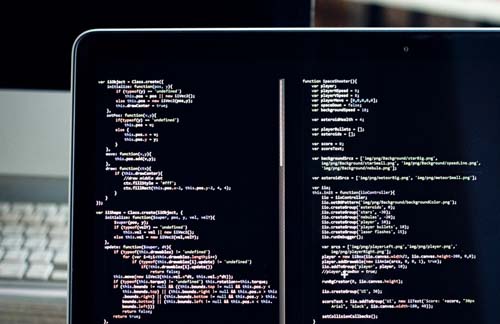推薦答案
在Java中,可以使用javax.crypto包提供的加密算法和密鑰庫來進(jìn)行對稱加密和解密操作。對稱加密使用相同的密鑰同時(shí)進(jìn)行加密和解密,因此需要安全地管理密鑰以確保數(shù)據(jù)的保密性。下面是一個(gè)使用對稱加密算法進(jìn)行加密和解密的示例代碼:
import javax.crypto.Cipher;
import javax.crypto.KeyGenerator;
import javax.crypto.SecretKey;
import javax.crypto.spec.SecretKeySpec;
import java.nio.charset.StandardCharsets;
import java.util.Base64;
public class SymmetricEncryption {
public static void main(String[] args) throws Exception {
String plainText = "Hello, World!";
String encryptionKey = "SecretKey";
byte[] encryptedData = encrypt(plainText, encryptionKey);
System.out.println("Encrypted Data: " + Base64.getEncoder().encodeToString(encryptedData));
String decryptedText = decrypt(encryptedData, encryptionKey);
System.out.println("Decrypted Text: " + decryptedText);
}
public static byte[] encrypt(String plainText, String encryptionKey) throws Exception {
SecretKeySpec secretKey = generateKey(encryptionKey);
Cipher cipher = Cipher.getInstance("AES");
cipher.init(Cipher.ENCRYPT_MODE, secretKey);
byte[] encryptedData = cipher.doFinal(plainText.getBytes(StandardCharsets.UTF_8));
return encryptedData;
}
public static String decrypt(byte[] encryptedData, String encryptionKey) throws Exception {
SecretKeySpec secretKey = generateKey(encryptionKey);
Cipher cipher = Cipher.getInstance("AES");
cipher.init(Cipher.DECRYPT_MODE, secretKey);
byte[] decryptedData = cipher.doFinal(encryptedData);
return new String(decryptedData, StandardCharsets.UTF_8);
}
public static SecretKeySpec generateKey(String encryptionKey) throws Exception {
byte[] keyBytes = encryptionKey.getBytes(StandardCharsets.UTF_8);
KeyGenerator keyGenerator = KeyGenerator.getInstance("AES");
keyGenerator.init(128);
SecretKey secretKey = keyGenerator.generateKey();
return new SecretKeySpec(keyBytes, "AES");
}
}
上述代碼使用AES算法進(jìn)行對稱加密和解密。首先,通過generateKey方法生成AES密鑰,然后使用該密鑰初始化加密和解密的Cipher對象。encrypt方法將明文字符串轉(zhuǎn)換為字節(jié)數(shù)組后進(jìn)行加密,返回加密后的字節(jié)數(shù)組。decrypt方法對加密后的字節(jié)數(shù)組進(jìn)行解密并返回解密后的明文字符串。
注意:在實(shí)際應(yīng)用中,密鑰的生成和管理應(yīng)該更加安全可靠,并且考慮使用隨機(jī)生成的密鑰。
其他答案
-
下面是另一種使用Java進(jìn)行對稱加密和解密的示例代碼:
import javax.crypto.Cipher;
import javax.crypto.SecretKey;
import javax.crypto.SecretKeyFactory;
import javax.crypto.spec.PBEKeySpec;
import javax.crypto.spec.PBEParameterSpec;
import java.nio.charset.StandardCharsets;
import java.security.spec.AlgorithmParameterSpec;
public class SymmetricEncryption {
public static void main(String[] args) throws Exception {
String plainText = "Hello, World!";
String encryptionKey = "SecretKey";
byte[] encryptedData = encrypt(plainText, encryptionKey);
System.out.println("Encrypted Data: " + new String(encryptedData, StandardCharsets.UTF_8));
String decryptedText = decrypt(encryptedData, encryptionKey);
System.out.println("Decrypted Text: " + decryptedText);
}
public static byte[] encrypt(String plainText, String encryptionKey) throws Exception {
char[] password = encryptionKey.toCharArray();
byte[] salt = { 1, 2, 3, 4, 5, 6, 7, 8 };
int iterationCount = 1000;
PBEKeySpec pbeKeySpec = new PBEKeySpec(password);
SecretKeyFactory secretKeyFactory = SecretKeyFactory.getInstance("PBEWithMD5AndDES");
SecretKey secretKey = secretKeyFactory.generateSecret(pbeKeySpec);
Cipher cipher = Cipher.getInstance("PBEWithMD5AndDES");
AlgorithmParameterSpec parameterSpec = new PBEParameterSpec(salt, iterationCount);
cipher.init(Cipher.ENCRYPT_MODE, secretKey, parameterSpec);
byte[] encryptedData = cipher.doFinal(plainText.getBytes(StandardCharsets.UTF_8));
return encryptedData;
}
public static String decrypt(byte[] encryptedData, String encryptionKey) throws Exception {
char[] password = encryptionKey.toCharArray();
byte[] salt = { 1, 2, 3, 4, 5, 6, 7, 8 };
int iterationCount = 1000;
PBEKeySpec pbeKeySpec = new PBEKeySpec(password);
SecretKeyFactory secretKeyFactory = SecretKeyFactory.getInstance("PBEWithMD5AndDES");
SecretKey secretKey = secretKeyFactory.generateSecret(pbeKeySpec);
Cipher cipher = Cipher.getInstance("PBEWithMD5AndDES");
AlgorithmParameterSpec parameterSpec = new PBEParameterSpec(salt, iterationCount);
cipher.init(Cipher.DECRYPT_MODE, secretKey, parameterSpec);
byte[] decryptedData = cipher.doFinal(encryptedData);
return new String(decryptedData, StandardCharsets.UTF_8);
}
}
上述代碼使用PBEWithMD5AndDES算法進(jìn)行對稱加密和解密。通過使用相同的密碼和鹽值參數(shù),可以生成相應(yīng)的密鑰并初始化Cipher對象。encrypt方法將明文字符串轉(zhuǎn)換為字節(jié)數(shù)組后進(jìn)行加密,返回加密后的字節(jié)數(shù)組。decrypt方法對加密后的字節(jié)數(shù)組進(jìn)行解密并返回解密后的明文字符串。
-
下面是另一種使用Java進(jìn)行對稱加密和解密的示例代碼,使用了更加高級的AES算法和加密模式,同時(shí)采用密鑰生成器和Base64進(jìn)行密鑰和密文的編碼:
import javax.crypto.Cipher;
import javax.crypto.SecretKey;
import javax.crypto.SecretKeyFactory;
import javax.crypto.spec.IvParameterSpec;
import javax.crypto.spec.PBEKeySpec;
import javax.crypto.spec.SecretKeySpec;
import java.nio.charset.StandardCharsets;
import java.security.SecureRandom;
import java.security.spec.KeySpec;
import java.util.Base64;
public class SymmetricEncryption {
public static void main(String[] args) throws Exception {
String plainText = "Hello, World!";
String encryptionKey = "SecretKey";
byte[] encryptedData = encrypt(plainText, encryptionKey);
System.out.println("Encrypted Data: " + Base64.getEncoder().encodeToString(encryptedData));
String decryptedText = decrypt(encryptedData, encryptionKey);
System.out.println("Decrypted Text: " + decryptedText);
}
public static byte[] encrypt(String plainText, String encryptionKey) throws Exception {
SecureRandom random = new SecureRandom();
byte[] salt = new byte[16];
random.nextBytes(salt);
SecretKey secretKey = generateKey(encryptionKey, salt);
Cipher cipher = Cipher.getInstance("AES/CBC/PKCS5Padding");
cipher.init(Cipher.ENCRYPT_MODE, secretKey);
byte[] encryptedData = cipher.doFinal(plainText.getBytes(StandardCharsets.UTF_8));
byte[] iv = cipher.getIV();
byte[] encryptedDataWithIV = new byte[iv.length + encryptedData.length];
System.arraycopy(iv, 0, encryptedDataWithIV, 0, iv.length);
System.arraycopy(encryptedData, 0, encryptedDataWithIV, iv.length, encryptedData.length);
return encryptedDataWithIV;
}
public static String decrypt(byte[] encryptedDataWithIV, String encryptionKey) throws Exception {
byte[] iv = new byte[16];
System.arraycopy(encryptedDataWithIV, 0, iv, 0, iv.length);
byte[] encryptedData = new byte[encryptedDataWithIV.length - iv.length];
System.arraycopy(encryptedDataWithIV, iv.length, encryptedData, 0, encryptedData.length);
SecretKey secretKey = generateKey(encryptionKey, iv);
Cipher cipher = Cipher.getInstance("AES/CBC/PKCS5Padding");
cipher.init(Cipher.DECRYPT_MODE, secretKey, new IvParameterSpec(iv));
byte[] decryptedData = cipher.doFinal(encryptedData);
return new String(decryptedData, StandardCharsets.UTF_8);
}
public static SecretKey generateKey(String encryptionKey, byte[] salt) throws Exception {
SecretKeyFactory factory = SecretKeyFactory.getInstance("PBKDF2WithHmacSHA256");
KeySpec spec = new PBEKeySpec(encryptionKey.toCharArray(), salt, 65536, 256);
SecretKey tempSecretKey = factory.generateSecret(spec);
return new SecretKeySpec(tempSecretKey.getEncoded(), "AES");
}
}
上述代碼使用更強(qiáng)大的AES算法和加密模式(CBC),并使用隨機(jī)的初始化向量(IV)來提供更好的安全性。encrypt方法生成隨機(jī)的salt并使用密碼基礎(chǔ)導(dǎo)出(PBKDF2)算法生成密鑰,并使用CBC模式進(jìn)行加密。密文包括IV和加密數(shù)據(jù)。decrypt方法從密文中提取IV并使用密鑰進(jìn)行解密。最終返回解密后的明文字符串。
無論使用哪種方法,對稱加密和解密都需要處理密鑰的安全性,選擇合適的加密算法和使用正確的密鑰長度是保護(hù)數(shù)據(jù)安全的重要因素。同時(shí),對密鑰的生成、存儲(chǔ)和分發(fā)也需要考慮到安全性要求。在真實(shí)的應(yīng)用中,請遵循密碼學(xué)最佳實(shí)踐,并確保密鑰和加密的數(shù)據(jù)在傳輸和存儲(chǔ)過程中受到適當(dāng)?shù)谋Wo(hù)。























 京公網(wǎng)安備 11010802030320號
京公網(wǎng)安備 11010802030320號